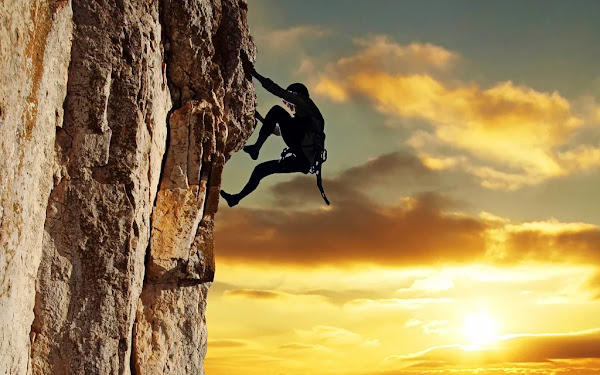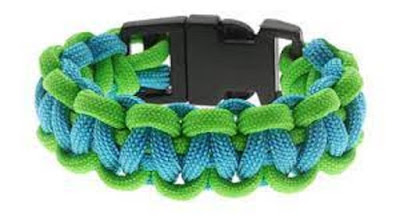Climbing Knots
Warning: Climbing is a dangerous sport.
This is an instruction article about rock climbing, a sport that is inherently dangerous. Do not depend solely on information from this book for your personal safety. Your climbing safety depends on your own judgment based on competent instruction, experience, and a realistic assessment of your climbing ability.
More so than any other tool in the climber’s repertoire, the rope is the tool that should be thoroughly understood and deployed in a way that makes a gesture to all other climbers and users: this rope says who I am, how I am doing, and how much I know.
The goal of this text is to deepen a climber’s understanding of the use of the climbing rope. Beginners may find this text helpful because the usage of the rope can be learned and practiced. When learning to tie knots and hitches, it is important to practice in a safe learning environment, like a ground school. It’s also important to learn to tie knots and hitches with both hands, from different perspectives, and in adverse conditions.
Rock climbing is a sport in which participants climb up, across, or down natural rock formations or artificial rock walls. The goal is to reach the summit of a formation or the endpoint of a usually pre-defined route without falling. Rock climbing is a physically and mentally demanding sport, one that often tests a climber's strength, endurance, agility and balance along with mental control. Knowledge of proper climbing techniques and the use of specialized climbing equipment is crucial for the safe completion of routes.
I'm going to tell you a little bit about types of climbing, some basic skills you should learn, and a brief dictionary on the climbing lingo you'll hear.
First types of climbing
There are a few more types of climbing than what I'll list but these are the basics that you'll find in most gyms all of these types of climbing will fall under these categories,
Sport Climbing (indoor climbing is known as indoor sport climbing)
Traditional Climbing (commonly known as Trad)
and Bouldering.
Honestly though most climbers I know don't really use those terms (well other than bouldering) instead we refer to them by these different types,
Top Rope
Lead Rope
Crack Climbing
and Bouldering. Here are some brief explanations of the above terms (some of these are from a rei.com expert advice article as they explain it better than I can).
Sport Climbing
This "clip-and-go" style of climbing allows the leader to progress upwards without the worry of placing protection. A "bolted" climb requires only a rope, quickdraws (described below), shoes and a chalk bag. It refers to routes that have pre-placed anchors and protection where you can attach your rope (just like you would with indoor climbing). Carabiners and quickdraws clip into the anchors and connect your rope to the rock.
Trad
Trad climbing is true adventure. A trad route is one that has few permanent anchors. The lead climber protects himself from a catastrophic fall by placing protection—nuts or camming devices—into fissures in the rock. The second climber removes the protection, and it's then placed again for further pitches. Carabiners and quickdraws are used to connect the rope into the protection.
Bouldering
This requires the least amount of time and gear. Basically, bouldering is close-to-the-ground climbing without a rope, going only as high as you can jump off without risking serious injury. Beginners can traverse (move along the rock horizontally, parallel to the ground), thus working on strength and movement without going high. Bouldering requires only climbing shoes, a crash pad (to cushion your jump or fall off the rock) and perhaps a chalk bag. You can also bring along friends to "spot" you.
Top Rope
If you've ever climbed a rock wall at a gym or an amusement park you probably done top rope basically this is where the rope is anchored at the top of the wall and one end of the rope goes to the climber and the other to the belayer it's the most common kind of gym climbing.
Lead
This is a more advanced climbing type the level of difficulty is usually higher and it requires more skill and practice to do. What you do here is as you climb up the wall you clip into anchor points that are fastened at certain points on the way up. Don't worry about this too much because you won't be doing any lead climbing for at least a few months for some it may take as much as a year or more before they are skilled enough to attempt their first lead route.
Crack
This is where you climb along a crack or crevice in a rock wall jamming your hands, feet and sometimes your arms to keep leverage to climb up it.
Now some basic skills, there aren't too many when you're just starting out in a climbing gym but you should know how to do the following things.
Tying a figure eight on a follow through, this is the knot you should use to tie into your harness even though some use other knots this is the safest knot to use so use it. There is a video on how to tie it above.
Gripping a rock hold. Most everyone will instinctively grip a hold the wrong way the pictures above show the correct and incorrect ways to grip a hold. What you don't want to do is have your thumb on your index finger if you slip and tighten your grip that can actually break your finger. You also don't want to curl your fingers up it puts extra stress and strain on your fingers, tendons, hands, and forearm muscles and will tire you out quicker and is likely to lead to injury down the road. The right way is to have your fingers at a 90 degree angle.
Standing on a foot hold or foot chip. You want to avoid having your heels drop when you stand on a hold when your heel drops below your toes your foot will start to slip off the hold which is bad. The best way is to either keep your heel level with your toes or stand on your tippy-toes.
Other than those simple things you'll have to learn the rest as you go for the most part but those few things will really help you out in the beginning.
Now on to the lingo here is a link to a full dictionary at https://rockclimbingcentral.com/ https://rockclimbingcentral.com/ but here are some common ones you should know.as well.
Belay - vb. the process of paying out the rope to the lead climber, or taking in rope for a follower, while he/she climbs, and of protecting the climber in the event of a fall. Belaying allows a climber to fall and live to try again. (2) n. - the place where a climber belays, and the anchor is set up attaching the climber to the rock, normally at the beginning and end of each pitch. (See belay station.) Also, a session of belaying.
Beta - n. information about a route.
Campus - (1) vb. to work out on a campus board. (2) vb. to climb with feet dangling as if using a campus board.
Campus board - n. a runged ladderlike training device used to train for climbing. Originated by the Late Wolfgang Guillich, this simple device has been largely responsible for advances in climbing difficulty around the world.
Crank - v. Slang for pulling on a hold at your maximum power.
Crux - n. the most crucial, difficult part of the climb.
Dyno - n. abbreviation for "dynamic movement", a move that requires some use of momentum. (antonym: static movement) 2. (vb.) to perform a dyno. A dyno usually requires your feet to leave their holds almost like jumping. This is a really powerful movement.
Flash - n. completion of a climb first try with no falls. 2. (vb.) to perform a flash.
Grigri - n. An auto-locking belay device working on a similar principle to car seatbelts, where a shock loading will tighten a sprung camming system and hold the rope. Does not allow dynamic belaying, so a large impact force results.
Onsight - n/vb. a clean ascent with no falls, first try, with no prior knowledge of the route. If you can do this on a hard route it means you're awesome!
Route - this is a path up a rock wall in most gyms it's marked either with tape or color coordinated holds. They are also graded as follows
Easiest
5.0
5.1
5.2
5.3
5.4
5.5
5.6
5.7
5.8
5.9
5.10
5.11
5.12
5.13
5.14
5.15
Completely ridiculous
You might see a letter after the last number like 5.10a,b,c, or ,d which means that the route is harder than a 5.10 but still easier than a 5.11
Problem - this is a what a route is called when you're bouldering. These are also graded but it's a bit different instead of 5.0-5.15 they're graded v0-v16
The first time you go climbing you don't need any gear you'll be able to rent all of that at you local climbing gym. If you like it and want to keep climbing you'll eventually want to invest in some of your own stuff so here are my tips for that.
First though is a brief summary of the gear you'll need to climb at a gym once you head outside you'll need more stuff but this is the basics so don't worry about that yet.
A harness
Rock shoes
Chalk and a chalk bag
Belay device
Carabiners
So if you've decided to start buying gear now that you've been climbing for a few weeks the first thing you should buy is your own harness, belay device, and chalk bag.
Don't buy your harness used! Always buy this new! A used harness could be old or damaged and will not be trustworthy. Plus some stores sell packages with a harness and chalk bag a locking carabiner and belay device at a slight discount.
Also a quick word on carabiners. Only use climbing approved biners and for your belay device always use a locking biner.
As belay devices go the cheaper ones will work fine at first like the black diamond ATC but as you progress you'll probably want to upgrade to a grigri which is auto locking and is better for taking big falls while lead climbing.
For shoes I recommend buying used shoes at first while you're still learning your footwork as you'll go through them more quickly. Once you've started to progress and you're not eating through the rubber on your shoes then start buying new and more aggressive shoes to help you continue to develop your foot work.




Comments
Post a Comment